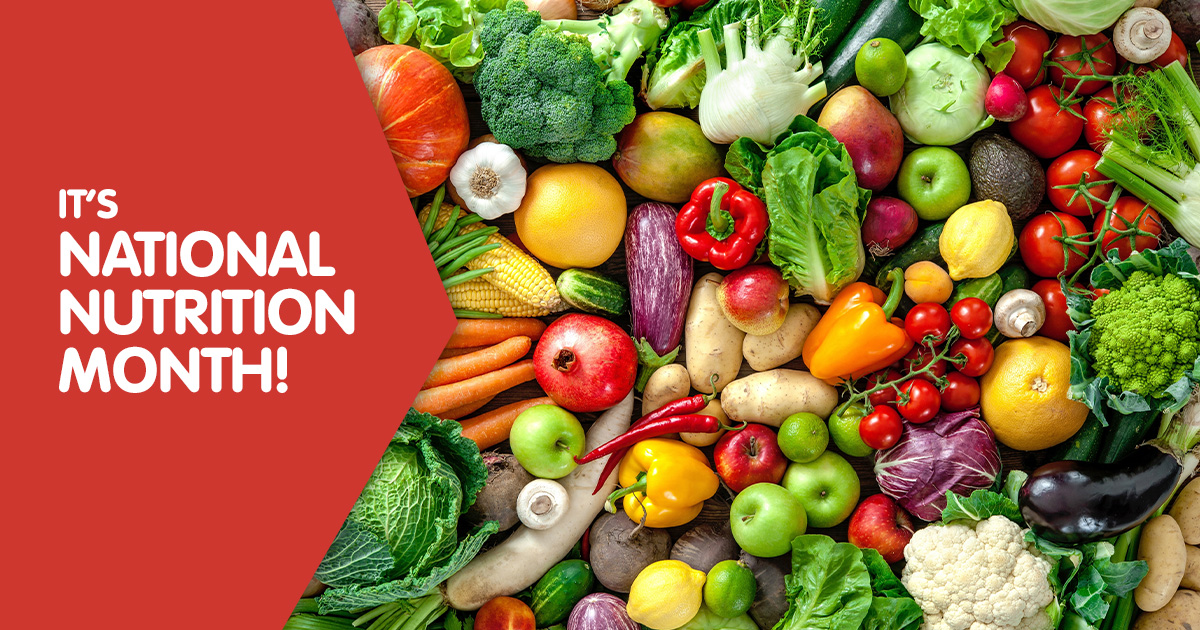- 888.258.8995
- Schedule a Tour

National Nutrition Month® is celebrated each year in March. It is an annual campaign created by the Academy of Nutrition and Dietetics (Academy) inviting everyone to learn about making informed food choices.
At Learning Care Group, developing healthy habits from the start is a part of our company-wide Grow Fit® program and commitment to families to build strong foundations for children so they thrive in all areas, including at the dinner table.
We asked our families what topics they wanted to learn more about during a Q&A prompt with Nicole Spain, our in-house Registered Dietitian Nutritionist. Spain develops all the seasonal menus used across our community of schools to make sure the selections we offer to children provide well-balanced choices and a variety of fruits and veggies.
Two main questions stood out:
- How do I make sure my picky toddler is eating enough?
- Are soy-based products bad for my child?
Hot Topic #1: Picky Toddlers
Toddlers, by nature, are always on the go! They don’t sit still for much of anything, including food. Children between the ages of 1 and 2 tend to poke and peck at their food. Why is this? Well, after a year of rapid growth, toddlers gain weight more slowly and, in turn, need less food. Because of this, toddlers are known to be quite picky about what they consume. What can you do?
- Relax! As parents and caregivers, we want to provide nutritious meals. Serve it creatively and leave the rest up to the kids. How much they eat, when they eat, and if they eat is mostly their responsibility. Since erratic eating habits are as normal as toddler mood swings, expect a child to eat well one day and practically nothing the next. On average, toddlers (ages 1 to 3) eat between 900 and 1800 calories per day. That’s quite a range! So, remember to be flexible.
- Provide Veggies Early & Often. The Dietary Guidelines for Americans recommend that toddlers consume ⅔ to 1 cup of vegetables per day. The first few years of life are a key period for establishing healthy taste preferences and dietary patterns. Compared with adults, children have heightened preferences for sweet-tasting foods and greater rejection of bitter-tasting foods. Delaying sweet fruits in favor of savory vegetables can encourage a more welcome variety. Positive reinforcement can also be effective in promoting acceptance.
- Be patient! It can take up to 10 times (or more) for a child to decide they’re into a new food. Focus on their initial facial expressions and willingness to continue eating. As children approach years 2 through 6, food neophobia (rejection of novel or unfamiliar food) is common. Children are likely to consume a lower quantity of vegetables. This will decrease as children reach adolescence.
- Get creative! Vegetables require a bit of creative marketing. If you aren’t the proud parent of a veggie eater, try some of these helpful tips:
- Plant a garden together. Toddlers love to help outdoors and picking fresh vegetables as they grow is exciting.
- Sneak grated or diced veggies into their favorite foods. Try adding grated carrots to pasta or chopped baby spinach to scrambled eggs.
- Camouflage vegetables. Blend some into their favorite sauces.
- Use vegetables as finger foods. Serve a variety with their favorite dips and see what they’re willing to try on their own. Think of it as a toddler charcuterie board!
- Make veggies sweeter with roasting. This is a great way to make them more appealing to a child’s naturally sweeter pallet.
- Make veggie art. If it looks fun, they’re more likely to be curious/interested.
- Plant a garden together. Toddlers love to help outdoors and picking fresh vegetables as they grow is exciting.
- Act as a role model. Parents influence the eating behaviors of their children in several ways, including making food choices for the family and role modeling. Research suggests that parental fruit and vegetable intake is associated with a young child’s vegetable intake. So, make sure they see YOU eating your vegetables to lead by example. Prioritize sitting down as a family during mealtime at least a few times per week.
Hot Topic #2: Why is Tofu on the Menu?
While data involving children and soy intake is limited, evidence suggests that soy does not have adverse effects on children or affect their pubescent development. Unless a child is allergic to soy, it can be a healthy option when used in moderation.
- Menu selections at Learning Care Group include soy milk which is only used as an alternative for children allergic or intolerant to dairy milk. We also offer edamame and tofu a few times per month on our school menus.
- Tofu (or bean curd) is a popular food derived from soy. It’s an excellent source of plant-based protein that offers all nine essential amino acids that your body can’t make on its own, making it a complete protein. Tofu is also a source of isoflavones, which are plant-created chemicals associated with a variety of health benefits such as good bone health, reduced inflammation, and reduced risk of chronic diseases.
- Soy is very nutrient-dense, meaning it provides a lot of nutrients in useful amounts relative to the amount of energy (calories) it provides. It is a reliable source of vitamins and minerals such as iron, zinc, calcium, and vitamin
More information about tofu can be found in this article by the American Heart Association.
